Nyheter
Navigating the Landscape of Global App Stores
Publicerad
5 månader sedanden

The crypto market has surged past $3T in total market capitalization, with smart-contract platforms leading the charge as risk appetite expands beyond Bitcoin. In particular, lean, cost-efficient blockchains have emerged as a key driver for onboarding users and boosting on-chain activity, as reflected in Figure 1.
• Solana soared 57% since the election, driven by memecoin-fueled retail interest and unprecedented DeFi activity, generating more revenue than Ethereum.
• Sui reached a new all-time high (ATH) near $4, also boosted by its gaming device pre-launch and consumer-friendly features.
• Aptos is gaining momentum for institutional-grade solutions like tokenization and payments, contributing to a recent price surge of 71%.
Figure 1 – Sector Price Performance Since Election Day

Source: Artemis, 21Shares
Given the proliferation of Layer 1s (L1s), it invites a closer examination of how the industry reached this point.
• Each L1 tackled the blockchain trilemma differently. While Bitcoin and Ethereum prioritized decentralization and security, later iterations focused on optimizing scalability.
• Ethereum’s first-mover advantage cemented the EVM as the standard for blockchain platforms, driving widespread adoption. However, its limitations spurred innovation, leading to the development of new virtual machines such as Solana’s SVM.
Despite these differences, each L1 plays a critical role in the on-chain ecosystem, tailored to unique use cases based on their architecture and features outlined in Figure 2 below.
Figure 2 – Technical Breakdown of Layer 1 Landscape

Source: Artemis, 21Shares
Below, we outline the unique strengths of each network, highlighting how they address various use cases in the order of their launch.
Ethereum – July 2015
The leading platform for decentralized applications (dApps) and a pioneer in smart-contract technology, as the first blockchain to introduce smart contracts.
• Ethereum laid the foundation for dApps and DeFi, commanding the highest liquidity with a Total Value Locked (TVL) of $60B.
• Its focus on decentralization and security, with more than 1M validators, makes it a trusted platform for tokenized government securities, totaling over $1.5B in assets.
• Ethereum hosts over 4,000 dApps, including prominent DeFi platforms like Uniswap and Aave, leveraging its unmatched network effects as the most widely adopted blockchain. While Layer 2 solutions enhance speed and efficiency, they have also introduced fragmentation, leading to reduced revenue.
Cardano – September 2017
The platform sets itself apart with a rigorous, research-driven approach to blockchain development.
• Introduced formal verification for smart contracts and enhanced Ethereum’s Proof-of-Stake (PoS) with Delegated Proof of Stake (DPoS), democratizing transaction validation.
• Collaborates with governments like Ethiopia to deploy Atala PRISM, enabling digital IDs that improve access to education and financial infrastructure in underserved regions. The network also promoted a transparent and efficient aid distribution system.
• Cardano’s growth has been hindered by slow development, a lack of EVM compatibility, and the absence of on-chain governance, resulting in a modest $456M TVL. Recent upgrades like the Chang Hard Fork foster a community-driven network, while the BitcoinOS integration will boost cross-chain utility by facilitating ADA-powered Bitcoin transactions.
Solana – March 2020
The network prioritized scalability powered by their innovative dual consensus model combining Proof of History (PoH) and PoS. With the ability to process nearly 3,000 transactions per second (TPS), Solana stands as one of the fastest blockchains available.
• This month, Solana’s DEX trading volume exceeded Ethereum’s by $40B, fueled by its efficient, low-cost blockchain and propelled by a dynamic DeFi ecosystem rich in retail-driven activity. This surge in trading volume has been a key driver behind the growth in Solana’s TVL, now reaching $8.3B.
• Solana powers decentralized physical infrastructure networks (DePIN) like Helium (broadband), Hivemapper (mapping), and Render (3D rendering), which demand high-speed, low-cost transactions at scale. Solana’s fast and efficient blockchain provides the necessary infrastructure for these applications to operate smoothly and cost-effectively.
• For Solana to deepen its integration with traditional finance—supported by PayPal’s PYUSD, which processes $30B, along with partnerships with Visa and Shopify—it must address ongoing network reliability issues, especially as its network experienced downtime once this year and multiple times over the past three years. The Firedancer validator client, capable of over 1M TPS on testnet, is positioned to reduce outages and enhance reliability, solidifying Solana’s role as a top solution.
Avalanche – September 2020
An EVM-compatible blockchain characterized by its subnet architecture, which enables customizable, permissioned networks connected to the Avalanche mainnet.
• Avalanche’s scalable subnet architecture enables customizable, permissioned networks with flexible gas fees, data privacy, and validator incentives. The Avalanche9000 upgrade enhances this with shared liquidity, lower validator costs, and full customizability, including geo-restrictions, making it ideal for tailored enterprise blockchain solutions.
• Avalanche’s Evergreen Subnets have attracted major TradFi players, including Franklin Templeton, which tokenized its $420M government money fund, as well as Citibank and Wellington Management exploring financial applications.
• Avalanche supports a wide range of industries, from Deloitte’s federal disaster reimbursement platform—designed to improve claim speed and transparency—to gaming projects like Shrapnel, which is built the GUNZ subnet. Its EVM compatibility and robust ecosystem pushed its TVL past $1B.
The Open Network (TON) – September 2021
A high-throughput blockchain designed for seamless user onboarding, TON aims to deliver a Web3 WeChat-like experience. Its strategic partnership with Telegram, which boasts 900M monthly active users, positions it as a key driver of mainstream blockchain adoption.
• TON’s Mini Apps act as a gateway to its on-chain ecosystem, leveraging projects like Hamster Kombat, which peaked at nearly 300M users, to drive retail adoption. However, its $300M TVL reflects a nascent financial ecosystem focused on simpler, retail-friendly use cases, leaving it comparatively underdeveloped in DeFi.
• Processing nearly 28M transactions this month, TON is strongly positioned to drive blockchain-based payments. Its recent USDT integration, surpassing $1B in supply within just seven months, further reinforces its potential in this space.
• Despite recent setbacks at Telegram, which operates independently from TON, the network’s growth this year underscores its strong potential. With scalable infrastructure and a vast addressable market, TON is well-positioned to onboard the next wave of users.
Aptos – October 2022
A high-performance blockchain leveraging the Move programming language, which was developed by Meta for their Diem project. Move prioritizes security and scalability, making it a strong contender for institutional use cases.
• Parallel processing enables sub-second settlement times and a theoretical throughput of 160K TPS, ensuring the performance needed for enterprise-grade applications.
• Aptos, led by ex-executives of Meta’s Diem project, is bringing institutions on-chain. Its credibility is bolstered by partnerships with TradFi giants like Microsoft, Franklin Templeton, and NBC Universal, alongside institutional-grade use cases such as Ondo’s tokenization platform. Alongside a growing DeFi ecosystem, which we’ll explore in detail later, these efforts have propelled its TVL to nearly $1B.
• Aptos streamlines Web3 access with keyless accounts, passwordless authentication, and transaction previews. Its support for emerging markets includes cost-efficient devices like the Jambo Phone, preloaded with blockchain tools. By combining advanced scalability with user-first design, Aptos is well-positioned for this cycle.
Sui – May 2023
Aptos’ twin is also a high-performance blockchain designed to deliver Web2-like simplicity to Web3. Also built on the Move programming language, it focuses on consumer-facing applications rather than institutional use cases.
• Sui caters to retail users with innovations like SuiPlay0X1, a gaming device bridging Web3 and traditional gaming. This focus has positioned Sui as a leader in consumer-facing dApps.
• Sui pairs sub-second finality and parallel processing with intuitive features like zkLogin for wallet creation via Google or Face ID, gasless interactions covered by apps, and QR-based payments with zkSend. By combining scalability with a user-friendly experience, Sui is primed to drive retail adoption and bridge the gap between Web2 and Web3, onboarding the next generation of crypto users.
• The recent launch of its Ethereum bridge and USDC support has significantly boosted Sui’s DeFi ecosystem, driving its TVL beyond $1.5B. This growth aligns with Sui’s recent ATH, just shy of $4.
We’ve just highlighted each blockchain’s unique features and selling points; now, let’s examine how these translate into real on-chain activity. We’ll assess key metrics like active addresses, decentralized exchange (DEX) trading volume, fees generated, and TVL to provide a clearer picture of each network’s performance.
Daily Active Addresses
Figure 3 – Daily Active Addresses on Smart-Contract Platforms in 2024

Source: Artemis, 21Shares
As shown in Figure 3 above, Solana emerged as a forerunner in user engagement, boasting the largest user base of 6.5M users driven by its trifecta of low fees, rapid transactions, and a user-friendly interface. A perfect storm for the memecoin frenzy that swept through the network this year, with more than 3.5M tokens launched on the memecoin factory pump.fun alone. Furthermore, Solana has become the preferred platform for the latest crypto trends, including tokens tied to AI-powered agents and DePIN protocols, as discussed earlier.
Similarly, Aptos has shown impressive user growth compared to other L1 blockchains like Avalanche, driven by its expanding DeFi ecosystem. Key developments fueling momentum include Blackrock’s BUIDL product expansion, the deployment of Tether’s USDT and Circle’s USDC on the network, and the upcoming integration of sBTC by Stacks. Together, these advancements are driving increased user enthusiasm and engagement across the network.
Ethereum, however, remains a formidable player, having effectively shifted a significant portion of its activity to L2 scaling solutions. This has resulted in almost 90% of transactions now occurring on L2s rather than the mainnet, underscoring the growing importance of scaling solutions as the execution layer for the legacy network. Despite this, L2s solutions have dramatically expanded Ethereum’s capabilities, achieving a 26-fold increase in throughput —382 transactions per second compared to 14 on the base layer—and attracting a user base of 2.6M, more than seven times Ethereum’s mainnet average of 350K users.
Decentralized Exchange Volume
Figure 4 – Decentralized Exchange Trading Volume on Smart-Contract Platforms in 2024

Source: Artemis, 21Shares
From a broader perspective, Ethereum and Solana dominate exchange activity, fueled by their thriving DeFi ecosystems. Ethereum has long maintained its top position, with the largest DeFi ecosystem boasting nearly $60B in TVL. Its financial applications have demonstrated remarkable resilience, withstanding multiple market challenges since 2020. In addition, Ethereum has been contributing almost 50% of all decentralized exchange (DEX) volume through the first three quarters of the year, until Solana flipped the script, as illustrated in Figure 4.
In fact, Solana has recently outpaced Ethereum across multiple metrics. For example, Solana’s DEX trading volume exceeded Ethereum’s by $40B in November, while its weekly DEX trading volume eclipsed Ethereum and all its Layer 2s combined during the final week of October. Additionally, three out of the top ten revenue-generating applications now operate on the Solana network. Notably, the Solana-based DEX Radyium generated $29B in trading volume over the last week, a 45% difference compared to Uniswap’s $20B. Furthermore, Solana-based platforms now account for three of the top ten DEXs, commanding over 40% of the total 24-hour trading volume across the entire crypto ecosystem.
Finally, while TON currently reports lower DEX volume and an underdeveloped DeFi ecosystem, its focus on simpler use cases has kept its TVL relatively modest. However, the upcoming Curve integration is expected to drive significant growth by enhancing stablecoin liquidity. Additionally, TON recently launched the testnet version of its bridging solution, enabling native Bitcoin transfers to its network. This breakthrough positions TON to tap into a vastly larger market, leveraging the $1.3T in dormant BTC.
Fees Generated
Figure 5 – Fees Generated by Smart-Contract Platforms in 2024

Source: Artemis, 21Shares
TON stands out among emerging platforms with its substantial network fees, driven by Telegram’s expansive Mini App ecosystem. This goes beyond crypto applications, integrating traditional services like ride-hailing and e-commerce, where TON-based assets are used for payments. Additionally, Telegram-centric offerings such as competitively priced global eSIMs, VPN solutions, and decentralized storage broaden its appeal, particularly to non-crypto-native users. All in all, this places TON as the third-highest fee-generating network compared to the other networks, which can be seen in Figure 8.
Alternatively, Solana has established itself as a fee-generating powerhouse, as depicted above in, Figure 5 with many leading dApps leveraging its high-speed, cost-effective blockchain. For example, the no-code memecoin creator platform Pump.fun has generated $220M in fees and attracted 150K users. Moreover, Solana-based protocols account for 50% of the top 15 fee-generating applications across all blockchains. Notably, trading bots Photon and BonkBot earn a combined $75M monthly, while Radium and staking provider Jito contribute $300M, collectively. This positioned Solana to currently generate 110% of Ethereum’s real economic value.
Finally, Ethereum’s recent Dencun upgrade led to a 90% reduction in L2 transaction costs. The upgrade introduced blobspace, an efficient data storage mechanism for L2 solutions. As this new system gains traction and approaches capacity, L2 transaction costs will gradually increase. This trend, already becoming apparent as shown below in Figure 6, suggests a potential resurgence in Ethereum’s mainnet revenue in the coming months.
Figure 6 – Ethereum Average Blob Count Per Block

Source: Dune Analytics, 21Shares
Total Value Locked
To recap, TVL serves as a crucial metric for financial ecosystems in the crypto space, analogous to assets under management in traditional finance.
Figure 7 – Total Value Locked in Smart-Contract Platforms in 2024

Source: Artemis, 21Shares
Ethereum, as the pioneer of DeFi, unsurprisingly maintains the largest TVL among all networks. However, the landscape is evolving rapidly.
Solana has emerged as a significant player, now commanding nearly 10% of DeFi’s TVL. This growth can be attributed to its seamless integration with traditional finance, expanding tokenization sector, and proliferation of payment-related use cases, as well as the surging maturity of its DeFi ecosystem.
Meanwhile, Avalanche continues to hold a substantial TVL, primarily due to its innovative subnet model that empowers businesses to create customizable networks with unprecedented control and flexibility. Consequently, Avalanche has become a hub for tokenization projects and institutional financial applications, both live and in development, as its network design effectively meets the business and privacy needs essential for TradFi.
In conclusion, these metrics provide a comprehensive view of the current standing and performance of various layer-1 blockchains. As seen in Figure 8, these platforms illustrate the diversity in blockchain usage patterns and provide insight into how each chain is positioned to compete in the landscape of blockchain-based applications. We believe there will not be “one chain to rule them all” and instead we will see a multi-chain future where certain chains are used over others for specific use cases.
Figure 8 – Summary of Key Metrics Across Smart-Contract Platforms

Source: Artemis, 21Shares
What’s happening this week?

Research Newsletter
Each week the 21Shares Research team will publish our data-driven insights into the crypto asset world through this newsletter. Please direct any comments, questions, and words of feedback to research@21shares.com
Disclaimer
The information provided does not constitute a prospectus or other offering material and does not contain or constitute an offer to sell or a solicitation of any offer to buy securities in any jurisdiction. Some of the information published herein may contain forward-looking statements. Readers are cautioned that any such forward-looking statements are not guarantees of future performance and involve risks and uncertainties and that actual results may differ materially from those in the forward-looking statements as a result of various factors. The information contained herein may not be considered as economic, legal, tax or other advice and users are cautioned to base investment decisions or other decisions solely on the content hereof.
Du kanske gillar
-
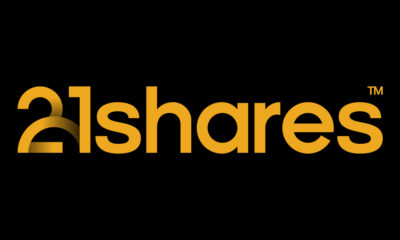

Michael Saylor’s bold Bitcoin bet and Strategy’s risk analysis
-
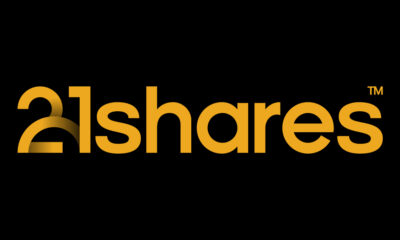

21Shares ringer i klockan på Nasdaq Stockholm
-


Svenskarna har en ny favorit-ETF
-
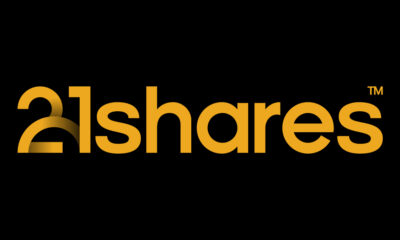

Crypto Market Risks & Opportunities: Insights on Bybit Hack, Bitcoin, and Institutional Adoption
-
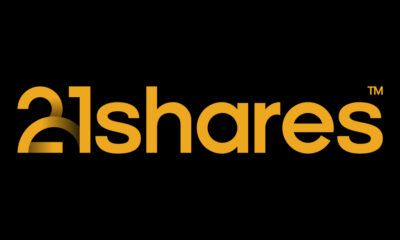

Bitcoin’s strength beneath the surface
-
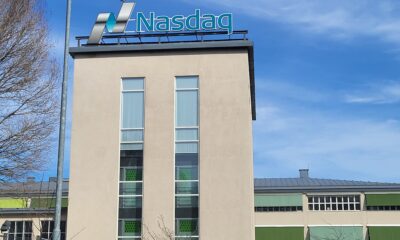

21Shares utökar det europeiska fotavtrycket med nya noteringar på Nasdaq Stockholm

iShares Metaverse UCITS ETF USD (Acc) (CBUV ETF) med ISIN IE000RN58M26, försöker följa STOXX Global Metaverse-index. STOXX Global Metaverse-index spårar företag från hela världen som har affärsverksamhet i metaverse-ekosystemet. Aktierna som ingår filtreras enligt ESG-kriterier (miljö, social och bolagsstyrning).
Den börshandlade fondens TER (total cost ratio) uppgår till 0,50 % p.a. iShares Metaverse UCITS ETF USD (Acc) är den enda ETF som följer STOXX Global Metaverse-index. ETF:n replikerar det underliggande indexets prestanda genom fullständig replikering (köper alla indexbeståndsdelar). Utdelningarna ackumuleras och återinvesteras.
iShares Metaverse UCITS ETF USD (Acc) är en liten ETF med tillgångar på 88 miljoner euro under förvaltning. Denna ETF anserades den 7 december 2022 och har sin hemvist i Irland.
Investeringsmål
Fonden strävar efter att uppnå en avkastning, genom en kombination av kapitaltillväxt och inkomst, som återspeglar avkastningen från STOXX Global Metaverse Index.
Handla CBUV ETF
iShares Metaverse UCITS ETF USD (Acc) (CBUV ETF) är en europeisk börshandlad fond. Denna fond handlas på flera olika börser, till exempel Deutsche Boerse Xetra och London Stock Exchange.
Det betyder att det går att handla andelar i denna ETF genom de flesta svenska banker och Internetmäklare, till exempel DEGIRO, Nordnet, Aktieinvest och Avanza.
Börsnoteringar
| Börs | Valuta | Kortnamn |
| gettex | EUR | CBUV |
| Borsa Italiana | EUR | MTAV |
| Euronext Amsterdam | USD | MTAV |
| London Stock Exchange | GBP | MTAV |
| SIX Swiss Exchange | USD | MTAV |
| XETRA | EUR | CBUV |
Största innehav
| Kortnamn | Namn | Sektor | Vikt (%) | ISIN | Valuta |
| NVDA | NVIDIA CORP | Informationsteknologi | 7.79 | US67066G1040 | USD |
| COIN | COINBASE GLOBAL INC CLASS A | Finans | 7.15 | US19260Q1076 | USD |
| LOW | LOWES COMPANIES INC | Sällanköpsvaror | 7.10 | US5486611073 | USD |
| META | META PLATFORMS INC CLASS A | Kommunikationstjänster | 5.96 | US30303M1027 | USD |
| SHOP | SHOPIFY SUBORDINATE VOTING INC CLA | Informationsteknologi | 5.00 | CA82509L1076 | USD |
| ADSK | AUTODESK INC | Informationsteknologi | 4.25 | US0527691069 | USD |
| ADBE | ADOBE INC | Informationsteknologi | 3.28 | US00724F1012 | USD |
| EA | ELECTRONIC ARTS INC | Kommunikationstjänster | 3.12 | US2855121099 | USD |
| RBLX | ROBLOX CORP CLASS A | Kommunikationstjänster | 3.10 | US7710491033 | USD |
| 7974 | NINTENDO LTD | Kommunikationstjänster | 2.65 | JP3756600007 | JPY |
Innehav kan komma att förändras
Nyheter
Europeisk försvarsutgiftsboom: Viktiga investeringsmöjligheter mitt i globala förändringar
Publicerad
10 timmar sedanden
4 april, 2025
Jane Edmondson, Head of Index Product Strategy på TMXVettaFi, träffade Steve Darling från Proactive för att diskutera det snabbt utvecklande globala försvarslandskapet och de investeringsimplikationer som en europeisk försvarsutgiftsboom medför. Med geopolitiska spänningar på uppgång och skiftande försvarsprioriteringar måste investerare navigera efter nya möjligheter och risker i sektorn.
Edmondson lyfte fram Europas oöverträffade ökning av försvarsutgifterna, ett direkt svar på USA:s beslut att minska militärt bistånd till Ukraina. Centralt i denna förändring är EUs initiativ ”Rearm Europe Readiness 2030” på 800 miljarder euro, som syftar till att stärka den militära beredskapen. Detta inkluderar betydande investeringar i nyckelförsvarstekniker och en dedikerad kreditfacilitet på 150 miljarder euro för att förbättra militär kapacitet.
”Det kommer att bli mycket utgifter framöver,” noterade Edmondson och betonade stora tillväxtområden som artificiell intelligens, cyberförsvar, drönarteknik och avancerade artillerisystem.
Hon påpekade att ledande europeiska försvarsföretag – inklusive Rheinmetall, BAE Systems, Thales, Dassault och Leonardo SPA – kommer att dra stor nytta av denna expansion. Dessutom framträder Sydkoreas Hanwha Aerospace som en nyckelspelare i globala försvarskontrakt. Däremot upplever amerikanska försvarsföretag motvind på grund av budgetnedskärningar och inställda upphandlingsavtal, vilket leder till en relativ nedgång i sektorn.
En annan kritisk förändring av global försvarsupphandling håller på att utvecklas när traditionella amerikanska allierade omprövar sina försvarsinköp. Kanada och Portugal, till exempel, omvärderar beställningar på USA-tillverkade F-35 stridsflygplan till förmån för alternativa alternativ, som flygplan från Dassault Aviation.
Edmondson betonade att dessa geopolitiska omställningar skapar stark ekonomisk medvind, särskilt för Tyskland, som kommer att investera uppskattningsvis 500 miljarder euro i försvar under de kommande åren. Hon citerade en nyligen gjord rapport från Goldman Sachs, som förutspår att hälften av dessa utgifter direkt kommer att underblåsa BNP-tillväxten – en effekt som redan återspeglas på finansmarknaderna. Medan europeiska aktier, särskilt Euro Stoxx 50-index, tar fart, har stora amerikanska aktieindex kämpat för att hålla jämna steg.
”Detta är en kraftfull påminnelse för investerare att hålla sig diversifierade, behålla exponering utanför amerikanska marknader och allokera kapital till framväxande globala försvarsteman,” rådde Edmondson.
När globala militära strategier fortsätter att utvecklas kan investerare som positionerar sig tidigt i viktiga internationella försvarssektorer dra nytta av denna historiska förändring.
HanETF planerar en ny försvarsfond med fokus på europeiska företag som kommer att börja handlas i nästa vecka. Vi har ännu inte namnet på denna, men kortnamnet på tyska Xetra är 8RMY medan det i London blir tickern ARMY.
Handla ASWC ETF
HANetf Future of Defence UCITS ETF (ASWC ETF) är en europeisk börshandlad fond. Denna fond handlas på flera olika börser, till exempel Deutsche Boerse Xetra och London Stock Exchange. Av den anledningen förekommer olika kortnamn på samma börshandlade fond.
Det betyder att det går att handla andelar i denna ETF genom de flesta svenska banker och Internetmäklare, till exempel Nordnet, SAVR, DEGIRO och Avanza.

WisdomTree Uranium and Nuclear Energy UCITS ETF USD Unhedged Acc (WNUC ETF) med ISIN IE0003BJ2JS4, försöker spåra WisdomTree Uranium and Nuclear Energy UCITS-index. WisdomTree Uranium and Nuclear Energy UCITS-index spårar företag över hela världen som är engagerade inom uran- eller kärnenergiindustrin.
Den börshandlade fondens TER (total cost ratio) uppgår till 0,45 % p.a. WisdomTree Uranium and Nuclear Energy UCITS ETF USD Unhedged Acc är den enda ETF som följer WisdomTree Uranium and Nuclear Energy UCITS-index. ETFen replikerar det underliggande indexets prestanda genom full replikering (köper alla indexbeståndsdelar). Utdelningarna i ETFen ackumuleras och återinvesteras.
Denna ETF lanserades den 5 mars 2025 och har sin hemvist i Irland.
WisdomTree Uranium and Nuclear Energy UCITS ETF (”Fonden”) strävar efter att spåra pris- och avkastningsutvecklingen, före avgifter och utgifter, för WisdomTree Uranium and Nuclear Energy UCITS Index (”Indexet”). Indexet är utformat för att följa resultatet för företag som är involverade i uran- och kärnenergiindustrin.
Varför investera?
- Få en unik strategi med hög övertygelse för investeringar i uran- och kärnenergiföretag.
- Kärnenergi är avgörande för den framtida hållbara energimixen, eftersom kraven på energi ökar, kommer det att bli nödvändigt att skala upp tillförlitliga källor för ren energi.
- Denna ETF erbjuder exponering mot en diversifierad korg av företag som är involverade i uran- och kärnenergimarknaden, såsom uranbrytning, byggande av kärnkraftsinfrastruktur eller bedriver avancerad forskning om framtida kärnteknik.
- Analysen för urval och viktning av företag i indexet utförs av WisdomTree med betydande expertis i att konstruera tematiska index, vilket säkerställer att portföljkorgen förblir fokuserad och relevant.
- ETFen är UCITS-kompatibel.
Handla WNUC ETF
WisdomTree Uranium and Nuclear Energy UCITS ETF USD Unhedged Acc (WNUC ETF) är en europeisk börshandlad fond. Denna fond handlas på flera olika börser, till exempel Deutsche Boerse Xetra och London Stock Exchange.
Det betyder att det går att handla andelar i denna ETF genom de flesta svenska banker och Internetmäklare, till exempel Nordnet, SAVR, DEGIRO och Avanza.
Börsnoteringar
| Börs | Valuta | Kortnamn |
| Borsa Italiana | EUR | NCLR |
| London Stock Exchange | GBX | NCLP |
| London Stock Exchange | USD | NCLR |
| XETRA | EUR | WNUC |
Största innehav
| Namn | Kortnamn | Land | Vikt % |
| 1. Cameco Corp | CCJ US | CA | 7,63% |
| 2. Paladin Energy Ltd | PDN AU | AU | 6,81% |
| 3. Uranium Energy Corp | UEC US | US | 6,66% |
| 4. Denison Mines Corp | DNN US | CA | 6,39% |
| 5. Doosan Heavy Industries | 034020 KS | KR | 6,06% |
| 6. NEXGEN ENERGY LTD COMMON STOCK | NXE | 5,98% | |
| 7. GE Vernova Inc | GEV US | US | 5,27% |
| 8. Air Liquide SA | AI FP | FR | 5,10% |
| 9. Atkinsrealis Group Inc | ATRL CN | CA | 4,79% |
| 10. Energy Fuels Inc | UUUU US | US | 4,70% |
Innehav kan komma att förändras

CBUV ETF satsar på Metaverse

Europeisk försvarsutgiftsboom: Viktiga investeringsmöjligheter mitt i globala förändringar

WNUC ETF ger exponering mot uran och kärnkraft

MONTLEV, Sveriges första globala ETF med hävstång

Montrose storsatsning på ETFer fortsätter – lanserar Sveriges första globala ETF med hävstång

Fonder som ger exponering mot försvarsindustrin

WisdomTree lanserar europeisk försvarsfond.

Warren Buffetts råd om vad man ska göra när börsen kraschar

De bästa börshandlade fonderna för tyska utdelningsaktier

Trumps återkomst får europeiska aktier att rusa
Populära
-

 Nyheter2 veckor sedan
Nyheter2 veckor sedanFonder som ger exponering mot försvarsindustrin
-

 Nyheter3 veckor sedan
Nyheter3 veckor sedanWisdomTree lanserar europeisk försvarsfond.
-

 Nyheter1 vecka sedan
Nyheter1 vecka sedanWarren Buffetts råd om vad man ska göra när börsen kraschar
-

 Nyheter3 veckor sedan
Nyheter3 veckor sedanDe bästa börshandlade fonderna för tyska utdelningsaktier
-

 Nyheter4 veckor sedan
Nyheter4 veckor sedanTrumps återkomst får europeiska aktier att rusa
-

 Nyheter4 dagar sedan
Nyheter4 dagar sedanSvenskarna har en ny favorit-ETF
-
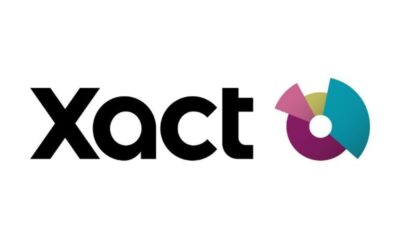
 Nyheter4 veckor sedan
Nyheter4 veckor sedanUtdelning i XACT Norden Högutdelande mars 2025
-

 Nyheter2 veckor sedan
Nyheter2 veckor sedanHANetf lanserar Europa-fokuserad försvars-ETF


